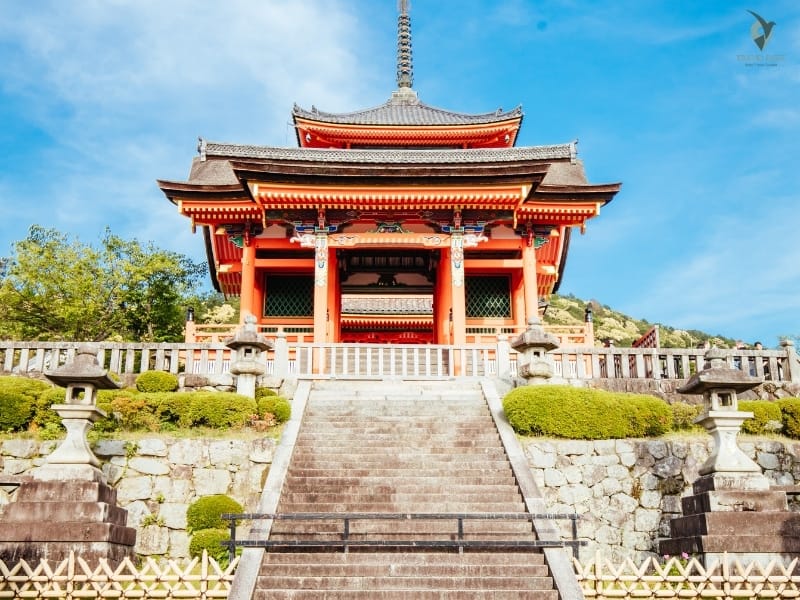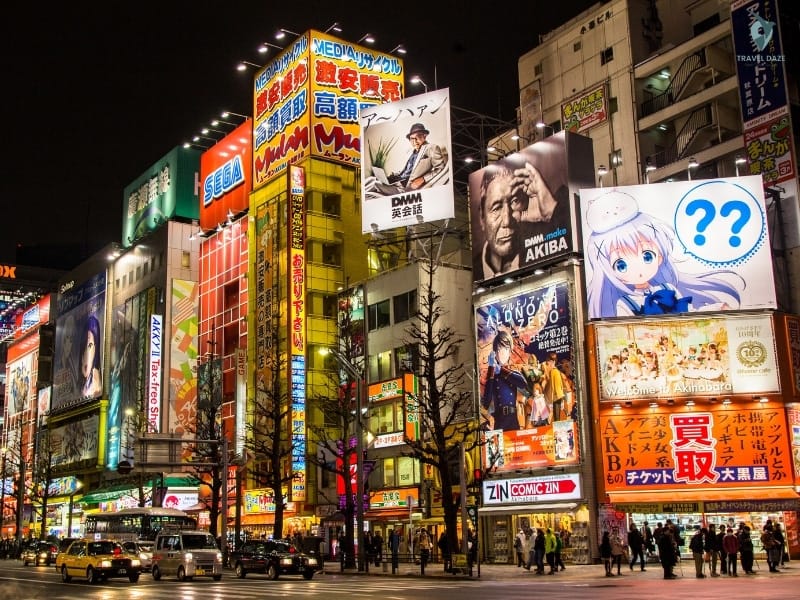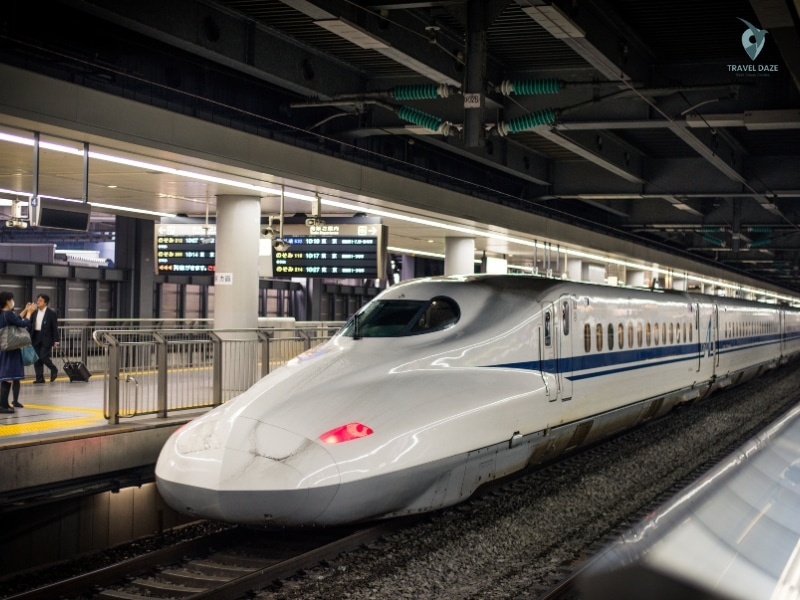I will always remember my first trip to Japan. Spring had arrived, and the cherry blossoms were blooming beautifully. The streets were a lovely shade of pink, and the air felt enchanting. That’s when I understood how the seasons influence the beauty of this country.
Table of Contents
ToggleJapan has something special to offer in every season. Spring brings beautiful cherry blossoms, and autumn shines with bright, colourful leaves. Summer is great for hiking in Hokkaido or the Alps, and winter turns the north into a snowy paradise. Every season has something special to offer.
Main Points
- Spring and autumn are the best times to see cherry blossoms and colourful autumn leaves.
- Summer is perfect for hiking in Hokkaido and the Japanese Alps.
- Winter brings special festivals and beautiful snowy scenes in the north.
- Make plans considering busy times such as Golden Week and Obon.
- The climates in different regions vary, with Hokkaido experiencing snow and Okinawa enjoying warmth.
The Importance of Timing for Your Trip to Japan
I discovered through experience how crowds can influence what you feel. During Golden Week, I navigated through crowded temples in Kyoto, wishing I had chosen quieter days. My friend visited in January and got a 40% discount on hotels.

The weather can change dramatically. Okinawa remains warm at 86°F in winter, while Hokkaido cools down to 32°F. Summer in Tokyo reaches 88°F, which is perfect for festivals but tough for extended sightseeing.
Festivals increase demand. I had a hard time booking a room during Sapporo’s Snow Festival. During the rainy season from June to July, prices are lower, but the humidity remains.
Make arrangements based on your travel dates. Shoulder seasons, such as April or October, offer mild weather and fewer crowds. Travel wisely, and Japan’s charm stands out even more.
The Ideal Times to Visit Japan: A Seasonal Overview
Japan’s seasons vary greatly, from the warm tropical climate of Okinawa to the cold, snowy weather of Hokkaido. Whether you seek cherry blossoms or skiing on fresh powder, the timing affects your experience. Here’s how to align your trip with nature’s schedule.
Spring (March–May): Beautiful Skies and Joyful Atmosphere
March begins with plum blossoms, but April takes the spotlight. In Kyoto, the Philosopher’s Path becomes pink, and people come together for hanami picnics. Golden Week in late April can be very busy, so it’s a good idea to book your plans early. Alternatively, you might want to check out rural towns such as Takayama.
Summer (June–August): Lush Mountains and Muggy Streets
The cool mountains of Hokkaido invite hikers, while Tokyo feels the heat at 88°F. June has rain, but July shines with fireworks. Get away from the humidity in the Alps of Nagano or on the beaches of Okinawa—just steer clear of Obon week in mid-August.
Autumn (September–November): Nature’s Celebration
In November, the temples of Kyoto shine beneath the red maple trees. In September, Okinawa still has a summery vibe, while Honshu enjoys a nice coolness. To avoid crowds, try visiting in late October. The leaves are at their best, and prices go down a bit.
Winter (December–February): Snowy Lands and Peaceful Temples
Niseko offers 590 inches of snow, attracting skiers, while Okinawa remains perfect for the beach at 70°F. February sparkles with the snow sculptures of Sapporo (Feb 4–11). Is it New Year? Join the locals as they ring temple bells or relax in Nagano’s onsens—warm pools beneath snowy skies.
- Here’s a budget tip: In January, you can find hotel deals in various cities. Visit the jazz cafes in Tokyo or the peaceful shrines in Kyoto.
- Festival choice: Otaru’s lantern-lit Snow Light Path in February.
- Nozawa’s baths are a great match for its exciting winter festival.
Avoiding Crowds and High Prices
Staying away from crowds in Japan requires careful planning, not just chance. During peak holidays such as Golden Week in late April and Obon in mid-August, trains become crowded and hotel prices increase significantly. I found this out the hard way when a Kyoto ryokan charged me three times its normal price.
Golden Week and Other Crowded Holidays
During Golden Week, temples and shrines are filled with locals enjoying their time off. Book your accommodations at least six months in advance or consider visiting quieter places like the art islands of Shikoku. Obon can be quite hectic—consider exploring Tohoku’s peaceful mountain trails instead.
Rainy Season and Transition Months
The rainy season in June and July reduces hotel prices by 25%. Enjoy the light rain: Kamakura’s hydrangea flowers make the temples look blue, and Hakone’s misty hot springs feel enchanting. Bring a foldable umbrella and waterproof shoes.
- During typhoon season in September, storms occur, yet the surf breaks in Chiba draw in professional surfers. Always look at weather alerts.
- October brings cool air and fewer people around. Forget about closing beaches—explore the beautiful golden forests of Nikko instead.
To have more travel options, aim for shoulder months such as late October. You can avoid the summer heat and winter cold while experiencing the peaceful times in Japan.
Essential Seasonal Events in Japan
Japan’s seasonal events beautifully highlight its culture and nature. Cherry blossoms and snow festivals are celebrations that unite people and showcase the country’s special charm. Every event provides an opportunity to enjoy Japan’s traditions and natural beauty in memorable ways.

Viewing Cherry Blossoms (Hanami)
In Japan, spring is all about cherry blossoms. Parks and streets turn into beautiful pink scenes, and people come together for hanami picnics. Kyoto’s Philosopher’s Path and Tokyo’s Ueno Park are well-known places. Make your plans early, since this season attracts many visitors from all over the globe.
Summer fireworks and dance festivals
Summer nights are bright with fireworks and traditional dance festivals. The fireworks on the Sumida River in Tokyo and the Gion Matsuri in Kyoto are events you shouldn’t miss. These events are great for enjoying Japan’s festive atmosphere, although it can be quite humid. Drink plenty of water and embrace the lively energy around you.
Autumn Leaves Lights
Autumn brings vibrant leaves and beautiful lights. The temples in Kyoto and the forests in Nikko are truly stunning. Late October has fewer people and lower prices. Now is a great time to discover Japan’s beautiful nature without the summer heat.
Snow Festivals in Hokkaido during Winter
The winter festivals in Hokkaido are enchanting. The Sapporo Snow Festival has more than 200 ice sculptures, and the penguin parade at Asahikawa Zoo is very popular with visitors. For a special experience, consider staying at an ice hotel or adding a ski resort to your trip. Be sure to check out Otaru’s Snow Light Path Festival, where lanterns illuminate the snowy streets.
- When driving in Hokkaido, be careful on the snowy roads. Rent a car that has snow tyres and drive carefully.
- Winter is the perfect season to savour Hokkaido’s fresh crab and sea urchin.
- Combine your festival visit with a ski trip to Niseko or Furano for the best winter experience.
Weather in Different Parts of Japan
The climates in Japan vary greatly, just like its culture and traditions. The weather changes a lot across the country, from snowy mountains to warm beaches. Knowing these differences can help make your travel experience easier and more enjoyable.

Hokkaido and Okinawa: Major Contrasts
Hokkaido and Okinawa feel like two completely different places. During winter, Hokkaido gets very cold, making it ideal for skiing and snow festivals. Okinawa remains warm, with average temperatures around 70°F even in February.
Summer in Hokkaido is pleasant, usually staying below 77°F, which makes it a great place for hiking. Okinawa has a tropical feel, with humidity and temperatures that often reach 86°F. Pack wisely—bring layers for Hokkaido and lightweight fabrics for Okinawa.
Tips for the Climate in Tokyo, Kyoto, and Osaka
Each major city in Japan has its own unique climate features. In March, Tokyo’s average temperatures are around 55°F, making it a great time to see the cherry blossoms. In August, the humidity in Kyoto reaches 80%, so it’s important to wear lightweight clothing. In November, Osaka gets an average of 3.4 inches of rain, so it’s important to have waterproof gear.
The urban heat island effect is clear in these cities, particularly in the summer. On rainy days, check out indoor places like the museums in Kyoto or the aquarium in Osaka. Autumn is great for day trips from Osaka, thanks to the cooler weather and beautiful leaves.
- Breathable fabrics are important for summers in Kansai.
- Cherry blossoms open up sooner in Tokyo compared to Kyoto.
- Day trips in autumn from Osaka provide beautiful sights and less busy places.
- On a rainy day, you can visit Kyoto’s National Museum or Osaka’s Science Museum.
Money-Saving Tips for Every Season
Travelling in Japan without spending too much is simpler than you may believe. By using some clever strategies, you can experience this amazing country without spending too much. If you’re planning a quick getaway or a longer visit, these tips will help you save money and enjoy your time to the fullest.
Flights are usually less expensive from January to March, with savings reaching up to 30%. Think about staying in capsule hotels, which start at $30 a night. They are small, yet tidy and easy to use. If you travel a lot, the JR Pass is a good choice, but keep in mind that prices went up in October 2023. Use it when it’s less busy to save more money.
Hostels are a budget-friendly option for those travelling alone. Business hotels provide greater privacy while remaining budget-friendly. Lunch set menus are a great deal—many restaurants provide filling dishes at prices that are lower than dinner. Convenience stores are really helpful, offering affordable breakfast choices like onigiri and sandwiches.
Make sure to consider free attractions. In spring, take a walk in parks filled with cherry blossoms. Summer has lively festivals, while autumn provides beautiful walks among colourful leaves. Is it winter? Experience beautiful snowy scenes and visit temples for free. For affordable places to stay, take a look at this guide on the best areas to stay in Tokyo for everyone.
- Hostels are less expensive, while business hotels provide greater privacy.
- Lunch set meals are an affordable way to savour local dishes.
- Off-peak rail passes help you save money by travelling when it’s less busy.
- Breakfasts from convenience stores are quick, affordable, and surprisingly delicious.
- Free attractions include parks, temples, and seasonal events that are completely free.
What to Pack for Each Season
Packing for Japan can really affect your trip, depending on the season. Every month has its own weather, so it’s important to plan ahead. Your luggage needs to be suitable for both hot, humid summers and cold winters, as well as the activities you plan to do.
In spring, you need a collapsable umbrella and a light jacket. Cherry blossom season can bring unexpected rain, and the evenings might still be a bit cold. Cooling towels and a portable fan are essential for summer. In June, the humidity can be quite strong, particularly in cities such as Tokyo and Kyoto.
Autumn is the time for cosy cardigans and strong hiking shoes. The mild temperatures in October are great for exploring, but it can be cool in the mornings and evenings. In winter, you need thermal underwear and ice grips, particularly in Hokkaido, where temperatures can fall to -20°F. Remember to bring a warm coat and waterproof boots for your snowy adventures.
Important items to have all year are an IC card for public transport and a power bank for your devices. These items are helpful in any season or place. Pack wisely, and you’ll be prepared for anything Japan has in store for you.
- Spring: A foldable umbrella and a lightweight jacket
- Summer: Cooling towels and a portable fan
- Fall: Cosy cardigans and hiking boots
- Winter: Warm pants and ice grips
- All year: IC card and power bank
Your ideal journey in Japan is ready for you.
The beauty of Japan is found in its changing seasons, with each one providing a special experience. Each season offers something unique, from cherry blossoms in spring to snowy festivals in winter. What do I like the most? The vibrant leaves of autumn in Kyoto are something I will always remember.
Being flexible is important when you plan your trip. Think about joining different seasons to experience the country at its best. Look up festival dates in advance, as they can influence your travel plans. Visiting during hanami picnics or lantern-lit streets can really enhance your experience. Choosing the right time is important.
Just like cherry blossoms, the ideal experience is short-lived but leaves a lasting impression. Make smart plans, and Japan will give you unforgettable memories.
FAQ
The best season to see cherry blossoms in Japan is spring.
Cherry blossoms, known as sakura, usually bloom from late March to early April. It’s a wonderful time filled with festivals and picnics beneath the trees.
What is the weather like in Japan during the rainy season?
The rainy season lasts from June until the middle of July. Be ready for humid days and regular rain, particularly in Tokyo and Kyoto.
Should I avoid any major holidays when planning my trip?
Yes, Golden Week, which is from late April to early May, and New Year’s are very busy times. Hotels get booked quickly, and prices go up during these national holidays.
What is the best way to enjoy autumn in Japan?
The time from September to November is ideal for enjoying autumn colours. The leaves change to bright colours, and the weather is pleasant—perfect for visiting gardens and temples.
Is winter a nice time to go to Hokkaido?
Of course! The snow festivals in Hokkaido during February are a must-see. Additionally, you will encounter fewer people and beautiful snowy scenery.
What is the temperature like in Japan during the summer?
Summers can be warm and sticky, particularly in places like Osaka. If you go to the mountains, it’s cooler and more pleasant.
When is the most affordable time to visit Japan?
Months like late November or early December usually have lower prices and fewer tourists. It’s an excellent method to cut costs on flights and hotels.
What items should I bring for a spring trip to Japan?
Make sure to wear layers! Spring mornings and evenings can feel cool, but the afternoons are warm. Remember to bring comfortable shoes for all the walking.
Are there any special festivals in the summer?
Absolutely! Summer is filled with fireworks shows and traditional dance festivals such as Obon. It’s a vibrant and exciting time to go.
What are the differences in weather between Tokyo and Okinawa?
Tokyo experiences four different seasons, but Okinawa remains warm throughout the year. During winter, Okinawa seems like a warm getaway when compared to the cooler temperatures of Tokyo.





